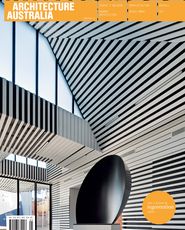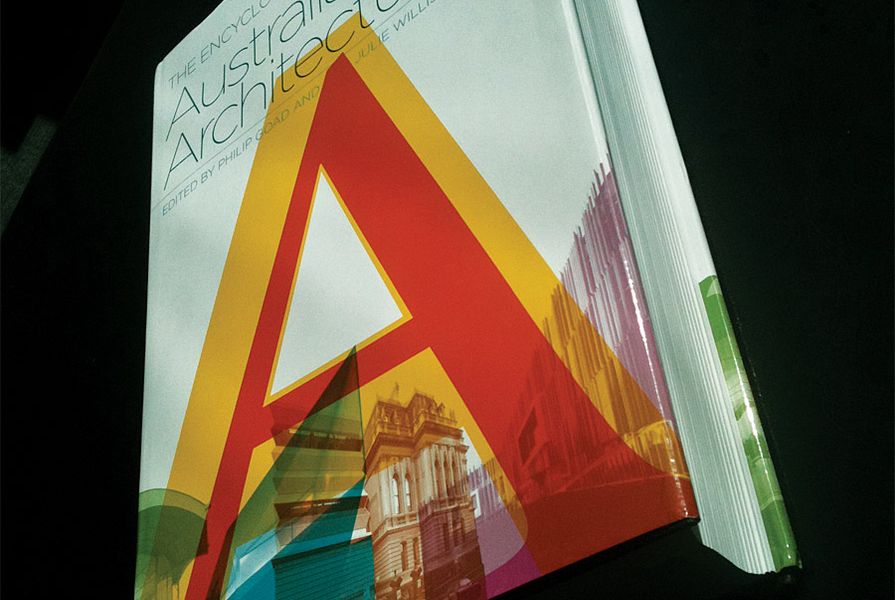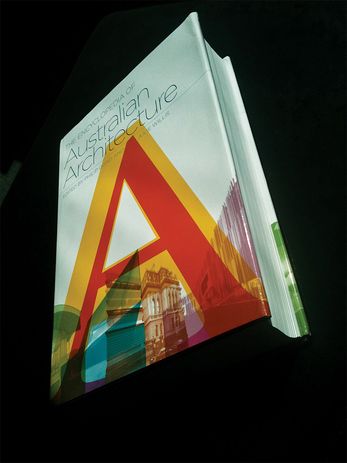The dictionary definition of encyclopedia is “[a] book that provides a comprehensive knowledge of a nominated subject.”1 One would assume then, that an encyclopedia of Australian architecture is intended to provide a comprehensive knowledge of Australian architecture. My question is: Why is there a need for a book that defines a strand of architecture that is specifically Australian?
The Encyclopedia of Australian Architecture by Philip Goad and Julie Willis.
The editors of The Encyclopedia of Australian Architecture, Philip Goad and Julie Willis, believe there is a vacuum in the written history of Australian architecture that needs to be addressed by a publication devised as an encyclopedia. In the introductory chapter, “Rationale and Structure,” they contend that “[t]here are very few comprehensive overviews of Australian architecture.” They also note that The Encyclopedia of Australian Architecture “is not a technical handbook … nor is it a dictionary of architecture,” and that it is “not an architectural history,” but that it may serve all those purposes. We can assume from this summary that the encyclopedia is not a manual of building technology, does not provide exacting definitions of meaning as in a dictionary and does not provide explanations of the historical development of Australian architecture. What space, then, does this encyclopedia fill and how does it do it?
If it is intended to provide a comprehensive knowledge of Australian architecture, the first assumption the editors and publishers must have made is that there is architecture that can be identified, known and described as “Australian architecture.” Is it the geographical and political entity known as Australia that determines the defining characteristics for Australian architecture or are there other defining characteristics? The editors recognize the need to provide an explanation of what Australian architecture means. In the chapter Making Place: An Outline History of Australian Architecture they provide a potted history of their understanding of Australian architecture. It proposes that Australia, and probably by inference Australian architecture “… could be seen as yet another Enlightenment project; one of colonialism … ” Obviously this means that Australian architecture begins with the imposition of British colonialism. Within the context of ongoing debates such as the “history wars” the ideas instrumental for an Australian architectural culture would be interpreted as being founded in ideas transported from another place. The editors are astute enough to recognize that this is a proposition that is not completely palatable. They begin to redress this by devoting the first section of the chapter to Aboriginal architecture and making it the first alphabetical entry in the main body of the encyclopedia. Much of the remainder of the chapter and the alphabetical entries record the architecture of postcolonial Australia.
How, then, does the encyclopedia deal with Australian architecture? The book is structured as a list of entries arranged alphabetically. The majority of the entries are dedicated to individual architects and architectural firms. This seems to imply that Australian architecture can be understood through authorship. Scattered among the lists of architects are other topics that deal with building types, place (e.g. state or regional), technical terms, materials, styles and aspects of the architectural profession. The entries are authored by a long list of individual contributors catalogued at the beginning of the book. The contributors’ relevant qualifications are briefly summarized in this section. Cross-references to other entries are indicated in bold type and many entries have additional reference material noted at the end of the entry. The overall structure is intended to provide a record of “… a richness and complexity as to what constitutes Australian architecture … ”
For me, The Encyclopedia of Australian Architecture is most useful as a starting reference for readers to find their way into a more complex understanding of what constitutes Australian architecture. If it means the reader understands Australian architecture to be a British or European response to the invasion of a place, then this is not a particularly satisfactory outcome. If it engenders a desire to be inquisitive about a more comprehensive explanation of architecture, it will be a project worth having pursued. As the editors say, if Australian architecture is known “ … through a few signature buildings, such as the Sydney Opera House and the work of a handful of architects … it is … hardly [a] comprehensive” way to understand the diversity the book catalogues.
I have numerous other questions about this book, such as: Are the entries the best ones that could have been made? Why is it limited to one thousand entries? Are the entries simply factual or are they opinions that are intended to spark ongoing debate? Why is there an emphasis on the authors of architecture? Should buildings be the focus? Would it be more appealing if it had more illustrations? Many of these questions are answered in the preamble, “Rationale and Structure.” The list of questions could be endless but maybe that is the reason for publishing the book – to ask more questions than can be answered.
What is obvious in the current world of information retrieval is that an encyclopedia of architecture is absolutely suited to an online format. An online book would preclude the need to publish ongoing editions, make it easy to access and allow it to be a dynamic and entertaining project. Most importantly, I hope the gap this book fills is a need to define “Australian architecture” based on national identity and that as a consequence it encourages architectural writers to publish books that interrogate and debate the disparate ideas that make architecture relevant to how people live and have lived.
Philip Goad and Julie Willis (eds), The Encyclopedia of Australian Architecture, Cambridge University Press, 2011, $150.
Source

Discussion
Published online: 11 May 2012
Words:
Peter Bickle
Issue
Architecture Australia, January 2012



















